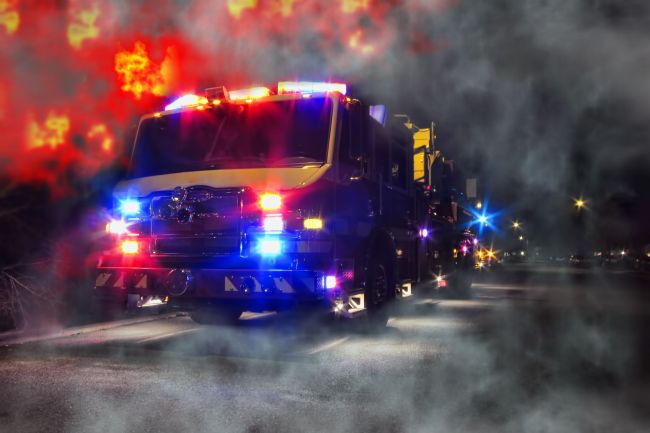Park Myeong-eun (not her real name), an office worker in her 30s in Seoul, was devastated when her father abruptly collapsed and lost his consciousness back in 2012. She and her family took him to the nearest general hospital, where he was admitted to its emergency facility, which was packed with patients. Her father soon awoke, but he had to wait more than five hours to get an x-ray done.
“It was really frustrating,” she told The Korea Herald. “We were just repeatedly told that we needed to wait. No one explained to us anything.”
More than three years have passed since Song’s experience, but the latest report released by the Health Ministry showed that not much has changed.
“It was really frustrating,” she told The Korea Herald. “We were just repeatedly told that we needed to wait. No one explained to us anything.”
More than three years have passed since Song’s experience, but the latest report released by the Health Ministry showed that not much has changed.

The report, written after inspecting a total of 414 general hospitals -- government-certified institutions with more than 500 patient beds -- last year, showed that at 27 hospitals a patient may need to wait at least 10 hours at emergency units to receive further treatment.
The long waiting times and crowd at the nation’s emergency centers were pointed out as one of the biggest contributing factors to last year’s Middle East respiratory syndrome outbreak. About 50 percent of all confirmed MERS patients contracted the virus at Samsung Medical Center’s emergency unit.
“It has always been a problem,” said Jeong Jae-su from the Korea Health and Medical Workers’ Union.
“The biggest problem is that while general hospitals are supposed to focus on treating inpatients with serious conditions, they also rely on outpatients for their profit. They are not sending back the kind of patients who don’t need treatment at general hospitals. And this is why the emergency units are always crowded.”
General hospitals not collaborating enough with smaller clinics is also cited as one of the causes, despite bigger facilities being advised to send patients with mild conditions to seek professional help from local and smaller services.
“When a patient is new to the hospital -- which many of the emergency patients tend to be -- most of the time they are asked to receive examinations for the diagnosis. So the more new patients a hospital receives, the more medical examinations they can perform. And more money comes out of that,” Jeong said.
Among the inspected hospitals, VHS Medical Center, a hospital for veterans and their families, had the longest waiting times for patients in critical conditions at its emergency unit -- an average of 23 hours.
Busan Paik Hospital had the second longest waiting time, an average of 21.2 hours.
Meanwhile, a patient would have to wait an average of 20 hours in order to receive further care after receiving urgent treatment at its emergency unit, the government report showed.
“General hospitals are supposed to keep a certain amount of their beds empty for emergency patients who need to be hospitalized right away,” said Seo Min-soo from the ministry’s emergency healthcare division. “But a lot of the times the beds are occupied by outpatients.”
Seo stressed that while only 6.6 percent of the patients who were admitted to the most crowded 20 emergency medical centers last year spent more than 24 hours at the facilities, they occupied 43.4 percent of all patient beds available.
The Health Ministry plans to retract government certification from general hospitals if the institutions house too many patients for more than 24 hours at emergency units, instead of giving them the necessary medical treatment or procedure as soon as possible, he said.
A nurse who works at one of the most crowded hospitals anonymously said there are also many cases in which emergency patients are released without receiving sufficient care as inpatients.
Once, a patient who just underwent a surgical procedure was given a meal even before passing gas, so she can be released as soon as possible, the nurse said. “This was done in order to have as many new patients as possible,” she said “And a number of such inpatients returned to the emergency unit as they weren’t treated properly post-surgery.”
By Claire Lee(dyc@heraldcorp.com)






![[From the Scene] Monks, Buddhists hail return of remains of Buddhas](http://res.heraldm.com/phpwas/restmb_idxmake.php?idx=644&simg=/content/image/2024/04/19/20240419050617_0.jpg&u=20240419175937)







![[From the Scene] Monks, Buddhists hail return of remains of Buddhas](http://res.heraldm.com/phpwas/restmb_idxmake.php?idx=652&simg=/content/image/2024/04/19/20240419050617_0.jpg&u=20240419175937)

![[KH Explains] Hyundai's full hybrid edge to pay off amid slow transition to pure EVs](http://res.heraldm.com/phpwas/restmb_idxmake.php?idx=652&simg=/content/image/2024/04/18/20240418050645_0.jpg&u=20240419100350)

![[Today’s K-pop] Illit drops debut single remix](http://res.heraldm.com/phpwas/restmb_idxmake.php?idx=642&simg=/content/image/2024/04/19/20240419050612_0.jpg&u=)